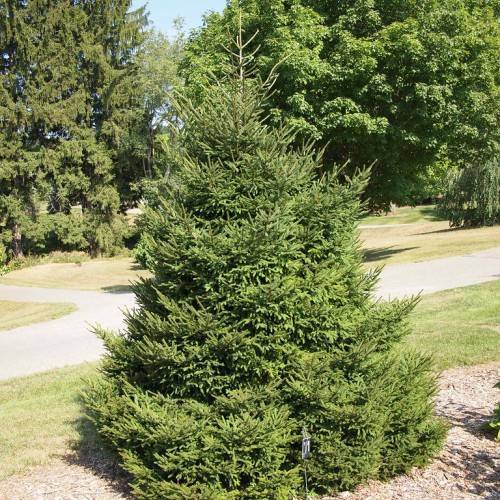
oriental spruce
Picea orientalis 'Skylands'
Cycle:
Perennial
Watering:
Average
Hardiness Zone:
4 - 7
Flowers:
Flowers
Sun:
Full sun, Part sun/part shade
Soil:
Well-drained
Cones:
Yes
Leaf:
Yes
Growth Rate:
Moderate
Maintenance:
Low
Drought Tolerant:
Yes
Care Level:
Medium
watering
Oriental spruce thrives in moist, well-draining soil that is acidic. Water the plant once a week, ensuring the soil is thoroughly moistened. In the hotter months, increase watering to twice a week, making sure to check the soil is not drying out between waterings. Avoid increasing the frequency of watering during cooler months, as this can cause root rot. Ensure that all water is completely absorbed before further watering.
sunlight
Oriental spruce prefer full sunlight or partial sunlight throughout most of the day. When grown in full sun, the tree should get a minimum of 6 hours of direct sunlight to promote optimal health and growth. When grown in partial sun, the tree should get several hours of direct sunlight in the morning and afternoon with some shade during the mid-day hours.
pruning
Oriental spruce (Picea orientalis 'Skylands') should be pruned once annually. Pruning should take place in early spring, before buds begin to emerge and the new growing season has begun. Generally, only young trees should be pruned significantly. Do not prune more than 1-third of the tree’s branches in any 1 year. To maintain the shape and health of the tree, consider removing some of the inner branches and any dead or diseased branches. Branches that are rubbing, too closely spaced, or crossing should also be removed.
